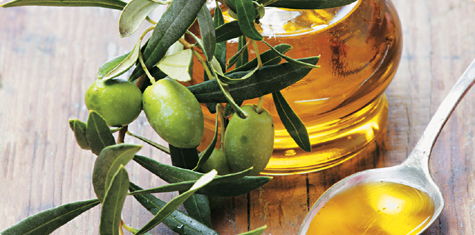 25, 58).
25, 58).What makes the Mediterranean diet the healthiest anti-aging eating plan there is? A growing body of research confirms it’s the diet’s ability to help you drop pounds and add healthy years to your life. In 2009, Spanish researchers reviewed scientific studies on the diet and found some remarkable trends. Not only do people who eat a Mediterranean-style diet have longer life spans, they reduce their risk of cardiovascular disease, cancer, metabolic syndrome (a cluster of symptoms including belly fat, high cholesterol, high blood pressure, and high blood sugar), and even Alzheimer’s and Parkinson’s diseases. They also noted that the more closely the subjects followed a traditional Mediterranean diet (MD), the less likely they were to be obese. Additionally, a 2008 study in the New England Journal of Medicine found that people who followed the MD lost more weight and had better blood sugar control than those who were on a traditional low-fat diet. What’s more, sticking to the MD may be easier because it includes reasonable portions of healthy fats, which help you feel satisfied while eating less.
Olive oil may be the most well-known component of the MD, but getting the most out of this eating style involves more than switching from butter to extra-virgin olive oil on your bread. The MD also incorporates fresh fruits and vegetables (on average, nine servings a day!), healthy fats such as olive oil and canola oil, whole grains, beans, fish or shellfish (at least twice a week), nuts and seeds, herbs and spices rather than salt, moderate amounts of red wine, and very little red meat. Bread, pasta, and rice are all allowed, but refined sugars and processed foods are notably absent. Portion control also figures into the dietary equation, but since you’re eating fresh, high-quality food, smaller portions can still satisfy.
The MD’s emphasis on healthy fats may be its most distinguishing characteristic. While it includes little to no saturated fat or trans fats, the diet is rich in monounsaturated fats from olive oil, nuts, and avocados, and polyunsaturated fats such as omega-3s in fish. Besides increasing satiety (feelings of fullness), these fats confer considerable health benefits. Olive oil contains antioxidant compounds called phenols that help fend off free-radical damage to your DNA and calm inflammation that can accelerate aging. Omega-3s also offer a wealth of health benefits that can help you look and feel younger while protecting against age-related conditions like cognitive decline and heart disease ( 25, 58).
25, 58).

The focus on fresh fruits and vegetables and nonmeat sources of protein also factors into the health and weight loss benefits of the diet. Mediterranean residents typically eat tomatoes, broccoli, peppers, capers, spinach, eggplant, mushrooms, white beans, lentils, and chickpeas, but all plant foods are on the table, so to speak. These foods are superb sources of antioxidants and other compounds that protect cells against the onslaught of aging. And because they’re naturally low in calories and high in fiber, they can help you drop pounds without feeling deprived.
Reducing sweets and simple carbs is another key to the MD. Naturally sweet fruit is the dessert of choice in the Mediterranean region. Whole grains such as brown rice, polenta, barley, and whole-wheat couscous offer fiber and nutrients, and they won’t spike your blood sugar like refined grains. A 2004 study in the American Journal of Clinical Nutrition also reported that men who increased their whole-grain intake were more likely to stave off middle-age weight gain. Overcoming decades of ingrained eating habits can be tough, so if eating this way feels totally foreign to you, start small—but do start.